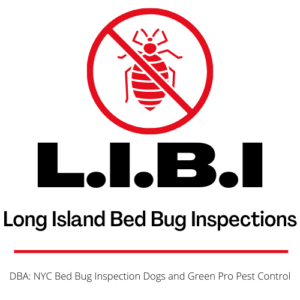2023 has been a bang-up year for bed bugs. If you’ve been paying attention to the news you’ll remember the infestations in Paris and the resulting panic in Germany and England. In short, it’s been a pretty high profile year for pests that depend on their ability to hide.
Bed bugs have all but mastered the art of concealment. It’s one of their major strengths. They have the ability to hide in some unexpected places, making it difficult to detect and eradicate household infestations. If you want to rid yourself of a bed bug infestation you first need to find their hiding places.
Which brings us to the topic at hand. Let’s talk about bed bugs and where they may be hiding.
Beds and Bedrooms
We’ll start with the obvious. Bed bugs tend to stay close to their food source, which, as it happens, is usually us. So you’ll always find bed bugs where people sleep.
You’ll find bed bugs hiding in the piping and seams of mattresses and bed springs. They will also hide in cracks and crevices on bed frames, headboards, and nightstands.
Upholstered Furniture
Bed bugs aren’t particular about where they feed. While we tend to associate these pests with the bedroom they will go wherever their sources of nourishment goes. That includes all parts of the home. If you like to lay on the couch and watch television or curl up in a comfy chair and read a hungry bed bug will find you.
Sofas, couches, and plush chairs are all prime hiding spots for bed bugs. You’ll also find them on other soft furnishings such as cushions, throw pillows, blankets, and curtains.
Electrical Outlets
Now for something a little different. If you find black spots around your electrical sockets it could be a sign of bed bug activity. These pests will crawl into power outlets to hide. Electrical outlets also allow bed bugs to travel between rooms as they infest a family home. To reduce the chances of bed bugs hiding in, or traveling through, your electrical outlets we suggest covering them with socket protectors when not in use.
Behind Loose Wallpaper
Loose wallpaper makes an ideal hiding place for hungry bed bugs. If you have wallpaper in your bedroom, or in your living room, that has become unstuck you should check underneath for signs of bed bug activity. Glue any loose spots down to prevent any stray pests from setting up a temporary camp.
Cracks and Crevices
Bed bugs are prone to hiding in cracks and crevices in your walls. These make ideal refuges for the pests allowing them to unseen by their victims until it’s time for them to come out and feed. If you have any cracks in your plaster work, or gaps where your walls meet the ceiling, now’s the time to get them fixed.
Carpets and Floor Coverings
Most of us have carpeting in our bedrooms or, at the very least, rugs. They help to keep the room cozy and comfortable. But carpets and carpeting can become a prime hiding spot for bed bugs. They prefer a long-piled carpet or shaggy rug where they can easily slip in between the fibers. You will also find them hiding along crevices where your carpeting meets your baseboards.
Hard wood floors aren’t always an option, so if you do have carpeting in your bedroom opt for a tightly woven variety. This will make it harder for bed bugs to burrow in and hide. Area rugs can also be washed in hot water to help eliminate any pests that do take up residence.
Bedtime Books
We’ll end our list with one of the more unusual hiding places. Many of us like to read a little before going to sleep. It’s a great way to unwind after a long day. But bed bugs may be hiding within the pages of your bedtime novel.
Bed bugs turn up in books in a couple of different ways. If you keep a book on your nightstand and your bedroom has a growing bed bug problem they may choose your evening reading material as a handy hiding place. Also, if you regularly buy second-hand books they may be infested with bed bugs looking for a new home. Check any used books carefully, looking for black spot along the edge or in the folds of the pages.
Managing bed bug infestations requires vigilance and an understanding of bed bug behavior. Knowing where these pests like to hide makes it easier to spot the early signs of a bed bug invasion. Regular inspections and being able to recognize the signs of bed bug activity in your home can help to protect your home and your family from a large scale bed bug infestation.
Published by Scott Palatnik
If you believe you’ve brought bed bugs into your home or office give us a call. We can Help!
Now with 2 locations. On Long Island @516-619-6149 or in NYC @ 212-299-9186
We are Long Island Bedbug Inspections.
Your Bedbug Inspection and Elimination Solution.


